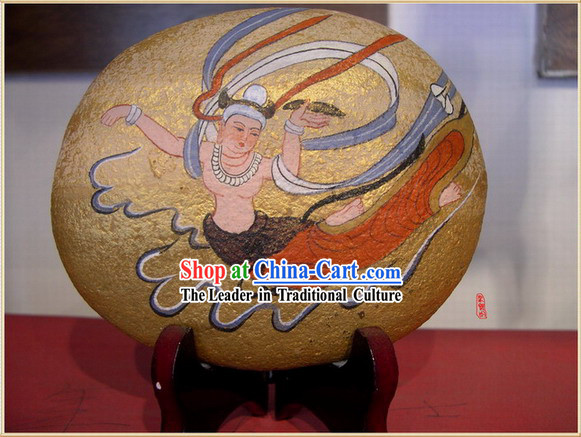
Click Related Pictures for More Audios:
This artwork is a hand-painted clay sculpture from China, titled "Zhang-Plutus".
It depicts a figure wearing a red robe and a golden headdress.
This sculpture carries rich spiritual and cultural significance and historical importance.
Firstly, the sculpture showcases the unique style and craftsmanship of ancient Chinese art.
Clay sculpture has a long history in China, dating back to the Neolithic period.
By observing this sculpture, we can understand how ancient artists utilized the properties of clay to shape the figure and their attention to detail and exquisite craftsmanship.
Secondly, the figure in this sculpture represents a role or identity in ancient Chinese society.
Based on the name "Zhang-Plutus," we can speculate that this figure may have been an official, scholar, or religious leader.
The attire and headdress indicate their status and power while reflecting the customs and aesthetic values of that time.
Lastly, this sculpture also carries symbolic meanings.
The red robe is commonly considered a lucky color, representing happiness and prosperity.
The golden headdress may symbolize power and nobility.
The entire sculpture conveys a positive and hopeful spirit through these elements.
In conclusion, the hand-painted clay sculpture "Zhang-Plutus" not only showcases the unique charm of ancient Chinese art but also conveys a positive cultural value system and social ideal.
It is a precious cultural heritage worth appreciating and passing down.
























































































